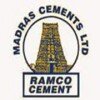Filter interviews by
Grasim Industries Instrumentation Technician Interview Questions and Answers
Grasim Industries Instrumentation Technician Interview Experiences
1 interview found
I applied via Recruitment Consulltant and was interviewed before Dec 2021. There were 2 interview rounds.

(2 Questions)
- Q1. Control valve positioner working principle. Types of sov.
- Ans.
Control valve positioner is a device used to control the position of a control valve based on the input signal.
Control valve positioner ensures accurate control of the valve position.
It receives a control signal from the controller and adjusts the valve position accordingly.
The positioner compares the valve position with the desired position and sends a pneumatic signal to the actuator to adjust the valve accordingly.
T...
- Q2. Thermocouple types and Rang
- Ans.
Thermocouple types and ranges
Thermocouples are temperature sensors that use the principle of thermoelectric effect
Common thermocouple types include K, J, T, E, and N
Each thermocouple type has a specific temperature range it can measure
For example, type K thermocouples can measure temperatures from -200°C to +1350°C
Type J thermocouples can measure temperatures from -40°C to +750°C
Thermocouple ranges can vary depending o
Interview Preparation Tips
All the best
All technicians hard working
Top trending discussions






Interview questions from similar companies

(1 Question)
- Q1. Technical manufacturing process

Production Engineer Interview Questions & Answers
Aditya Birla Groupposted on 10 Jan 2023
I applied via Company Website and was interviewed in Dec 2022. There were 2 interview rounds.

(2 Questions)
- Q1. Heat tranfer, heat exchanger, types of pump snd typed of resctor, condenser gas cooler chiller types of sgitator etc.
- Q2. Types of vaccume pump
- Ans.
There are several types of vacuum pumps, including rotary vane, diaphragm, scroll, and turbomolecular pumps.
Rotary vane pumps are commonly used in industrial applications and have a simple design.
Diaphragm pumps are oil-free and used in applications where contamination is a concern.
Scroll pumps are oil-free and used in applications where a clean vacuum is required.
Turbomolecular pumps are used in high vacuum applicatio...
Interview Preparation Tips
Thanku

I applied via Referral and was interviewed before Jan 2024. There were 2 interview rounds.
(3 Questions)
- Q1. Tell me about about yourself?family background.
- Ans.
I come from a close-knit family with a strong work ethic and values.
Family is very important to me and has played a significant role in shaping who I am today.
My parents have always emphasized the importance of hard work and perseverance.
I have a supportive family who has always encouraged me to pursue my goals and dreams.
Growing up, I learned the value of teamwork and communication from my siblings.
- Q2. Since I was from caustic chlorine background so they asked me about cl2 emergency handling ,TLV value
- Q3. Hcl synthesis process,and it's interlock ,problem in hcl furnace,
- Ans.
HCl synthesis process, interlocks, and problems in HCl furnace.
HCl synthesis involves combining hydrogen gas and chlorine gas in the presence of a catalyst.
Interlocks in the process ensure safety measures are in place to prevent accidents.
Common problems in HCl furnaces include corrosion, leaks, and temperature control issues.
(2 Questions)
- Q1. What will happen when flow of cooling water reduces in furnace?
- Ans.
Reduced flow of cooling water in furnace can lead to overheating, potential damage to equipment, and decreased efficiency.
Overheating of furnace components
Potential damage to furnace equipment
Decreased efficiency in cooling process
- Q2. What is the impact when freon compressor got tripped and what to do ?
- Ans.
When a freon compressor gets tripped, it can lead to a loss of cooling capacity and potential damage to the system.
Check for any fault codes or alarms on the compressor control panel.
Inspect the compressor for any visible signs of damage or overheating.
Reset the compressor and monitor its operation to ensure it is functioning properly.
Investigate the root cause of the trip to prevent future occurrences.
Consider contact...


(2 Questions)
- Q1. Process parameters
- Q2. Manufacturing process cement
(2 Questions)
- Q1. CCR OPERATION in cement plant
- Ans.
CCR operation in a cement plant involves monitoring and controlling the process parameters to ensure efficient production.
CCR stands for Central Control Room, where operators monitor and control the entire cement production process.
Operators in the CCR are responsible for adjusting process parameters such as kiln feed, fuel consumption, and raw material composition.
Efficient CCR operation is crucial for maintaining qua...
- Q2. Plant optimization in cement plant
- Ans.
Plant optimization in cement plant involves improving efficiency, reducing costs, and maximizing output.
Implementing advanced process control systems to optimize production
Regularly monitoring equipment performance and conducting maintenance to prevent breakdowns
Utilizing alternative fuels and raw materials to reduce energy consumption
Optimizing the use of additives to improve cement quality and reduce clinker usage

Production Engineer Interview Questions & Answers
Dalmia Bharat Cementposted on 22 Dec 2024
I applied via Campus Placement and was interviewed in Nov 2024. There were 2 interview rounds.
(5 Questions)
- Q1. Manufacturing process
- Q2. What is raw material
- Ans.
Raw material is the basic material used in the production of goods.
Raw material is the primary substance or component used to manufacture products.
It can be natural resources like wood, metal, or minerals.
It can also be processed materials like chemicals or plastics.
Raw materials are transformed into finished products through manufacturing processes.
- Q3. What is clinker
- Ans.
Clinker is a nodular material produced during the cement manufacturing process.
Clinker is a key ingredient in the production of cement.
It is formed by heating limestone, clay, and other materials in a kiln.
The cooled clinker is then ground into a fine powder to produce cement.
The quality of clinker greatly affects the quality of the final cement product.
- Q4. What is packing plant kapisity
- Ans.
Packing plant capacity refers to the maximum amount of products that can be processed and packaged in a plant within a specific time frame.
Packing plant capacity is usually measured in units per hour or units per day.
It is important for production engineers to optimize the packing plant capacity to meet demand and maximize efficiency.
Factors that can affect packing plant capacity include equipment efficiency, productio
- Q5. What is coal mill kapisity
- Ans.
Coal mill capacity refers to the maximum amount of coal that can be processed by the mill in a given time period.
Coal mill capacity is typically measured in tons per hour or tons per day.
It is important for production engineers to optimize coal mill capacity to meet production demands.
Factors affecting coal mill capacity include the type of coal, moisture content, and mill design.
Increasing coal mill capacity can invol...
(2 Questions)
- Q1. What is ball mill
- Ans.
A ball mill is a type of grinder used to grind and blend materials for use in mineral dressing processes, paints, pyrotechnics, ceramics, and selective laser sintering.
Consists of a hollow cylindrical shell rotating about its axis
The axis of the shell may be horizontal or at a small angle to the horizontal
The grinding media is the balls, which may be made of steel, stainless steel, ceramic, or rubber
The inner surface o...
- Q2. What is raw mill
- Ans.
Raw mill is a machine used in cement production to grind raw materials into a fine powder before being used in the kiln.
Raw mill is used in the cement industry to grind raw materials like limestone, clay, and iron ore into a fine powder.
The powdered raw materials are then blended and heated in a kiln to form clinker, which is the intermediate product in cement production.
Common types of raw mills include ball mills, ro...
Interview Preparation Tips
- Production Engineering

I applied via Naukri.com and was interviewed in Sep 2022. There were 2 interview rounds.

(2 Questions)
- Q1. How to increase productivity Smoothly operation
- Ans.
Increasing productivity and smooth operation can be achieved through proper planning, efficient processes, and continuous improvement.
Identify bottlenecks and inefficiencies in the production process
Implement lean manufacturing principles to eliminate waste and streamline processes
Invest in automation and technology to improve efficiency
Provide training and development opportunities for employees to enhance their skill...
- Q2. Plant operation smoothly
- Ans.
Plant operation can be made smooth by implementing efficient processes and regular maintenance.
Regular maintenance of equipment and machinery
Efficient scheduling of production runs
Effective communication between departments
Continuous improvement initiatives
Proper training of employees
Use of automation and technology
Monitoring and analysis of production data
Implementation of safety protocols
Effective inventory managemen
Interview Preparation Tips


(2 Questions)
- Q1. How you beneficial to our organisation ?
- Q2. What is your previous company achievement?
(2 Questions)
- Q1. Why you switch your current organisation?
- Q2. What is your acceptance salary

I applied via Approached by Company and was interviewed in Nov 2023. There was 1 interview round.
(1 Question)
- Q1. Basics about cement industry

I applied via Company Website and was interviewed in Aug 2022. There were 4 interview rounds.

Diplom cement technology, cement is a most useful resource.
(3 Questions)
- Q1. 1. Cement manufacturing process .
- Ans. Crossing, screening, stacking,reclaiming,grounding,free heating,burning,cooling,grainding,add materials prosentes.
- Q2. 2. Cement Row materials
- Q3. Raw mill vrm boll mill
- Ans. Grinding unit vrm speed and rpm , boll mill speed
Vrm rpm speed 20-25 and boll mill rpm speed 25-27
Interview Preparation Tips
- Diploma in Cement technology
Grasim Industries Interview FAQs
Tell us how to improve this page.
Grasim Industries Interviews By Designations
- Grasim Industries Assistant Manager Interview Questions
- Grasim Industries Territory Sales Manager Interview Questions
- Grasim Industries Junior Engineer Interview Questions
- Grasim Industries Territory Sales Executive Interview Questions
- Grasim Industries Assistant Engineer Interview Questions
- Grasim Industries Senior Engineer Interview Questions
- Grasim Industries Diploma Trainee Engineer Interview Questions
- Grasim Industries Production Engineer Interview Questions
- Show more
Interview Questions for Popular Designations
- Control & Instrumentation Engineer Interview Questions
- Instrumentation Supervisor Interview Questions
- Senior Instrumentation Technician Interview Questions
- Manager Instrumentation Interview Questions
- Electrical & Instrumentation Engineer Interview Questions
- Assistant Manager Instrumentation Interview Questions
- Electrical & Instrumentation Technician Interview Questions
- QC Inspector Instrumentation Interview Questions
- Show more
Grasim Industries Instrumentation Technician Interview Process
based on 1 interview
Interview experience
Interview Questions from Similar Companies
Fast track your campus placements
Grasim Industries Instrumentation Technician Reviews and Ratings
based on 17 reviews
Rating in categories
|
Assistant Manager
649
salaries
| ₹5.5 L/yr - ₹15.2 L/yr |
|
Assistant Engineer
435
salaries
| ₹3 L/yr - ₹7.7 L/yr |
|
Territory Sales Manager
339
salaries
| ₹4 L/yr - ₹11 L/yr |
|
Deputy Manager
299
salaries
| ₹5 L/yr - ₹19 L/yr |
|
Junior Engineer
295
salaries
| ₹2.2 L/yr - ₹6.2 L/yr |

UltraTech Cement

JK Cement

Shree Cement

Dalmia Bharat Cement
- Home >
- Interviews >
- Grasim Industries Interview Questions >
- Grasim Industries Instrumentation Technician Interview Questions

















